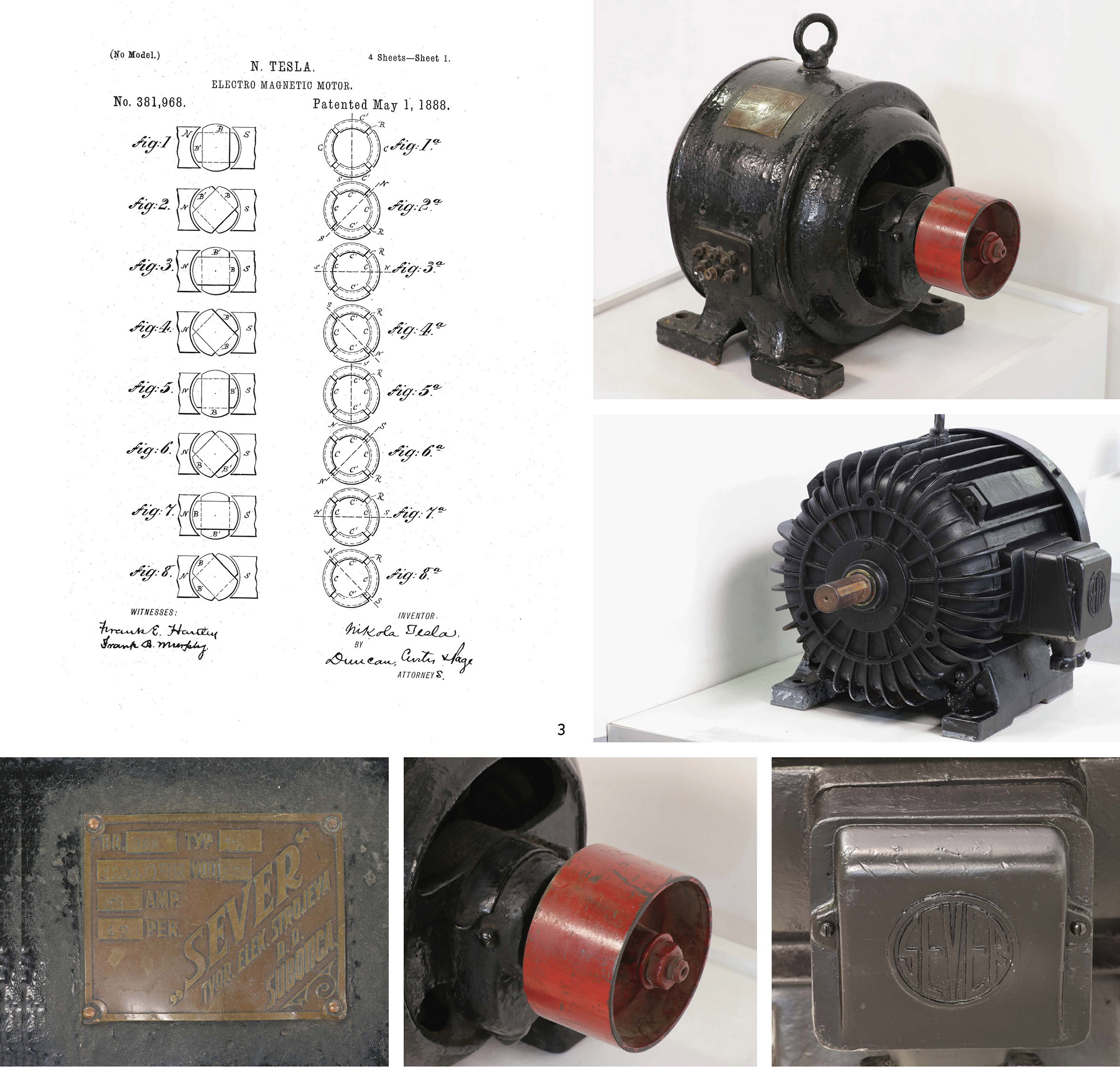Tesla Drive
42 Hz and 50 Hz induction engines
Original patent: Nikola Tesla
Manufacturer: Sever
Place and time of production: Subotica, Kingdom of Yugoslavia, 1930, 1940
Dimensions (cm): 38 . 26 . 33; 66 . 50 . 52
Inventory numbers: Т:116.6, Т:116.7
The industry’s growing needs for energy in the 19th century required a new kind of electric engine and a new system of production and transmission of electric energy. The invention of asynchronous engine, as well as transmission of power using polyphase alternating currents, which satisfied these needs, were based on Tesla’s invention of rotating magnetic field and protected by a series of patents.
Tesla’s main patents for asynchronous (induction) engine (no. US 381.968) and transmission of electric energy (no. US 382.280), were approved on May 1, 1888. For the operation of his engine, Tesla suggested using 60 Hz alternating current frequency, instead of the 133 Hz frequency that was used at the time. Application of the patents became possible when the manufacturers in the electric industry had accepted the proposal to decrease the operating frequency and when the system of public distribution of polyphase alternating current was established.
Sever Factory in Subotica, founded in 1923, was the most important Yugoslav manufacturer of electric machines before the Second World War. It used to manufacture 42 Hz and 50 Hz electric engines, examples of which are being kept at the Museum.
Concerning the contribution of Nikola Tesla to the industrial age, in 1921, engineer and scientist Bernard Behrend (1875–1932), Vice president of the American Institute of Electrical Engineers, wrote the following: “Suffice it to say that, were we to seize and to eliminate from our industrial world the results of Mr. Tesla's work, the wheels of industry would cease to turn, our electric cars and trains would stop, our towns would be dark, our mills would be dead and idle”.




